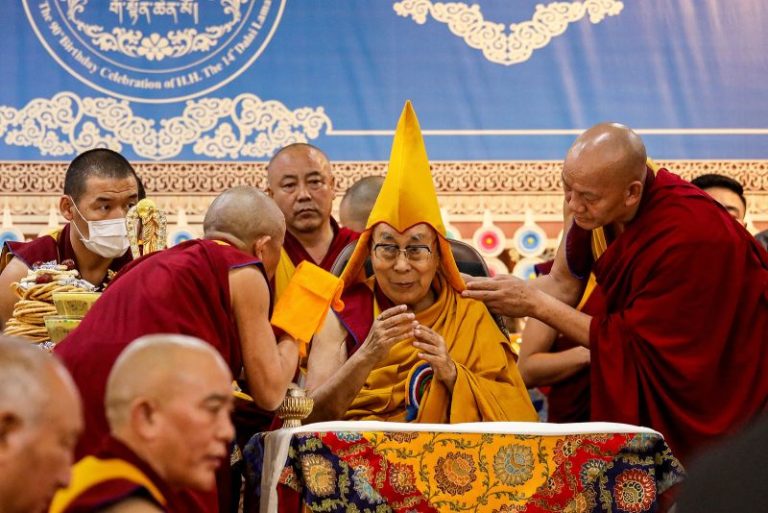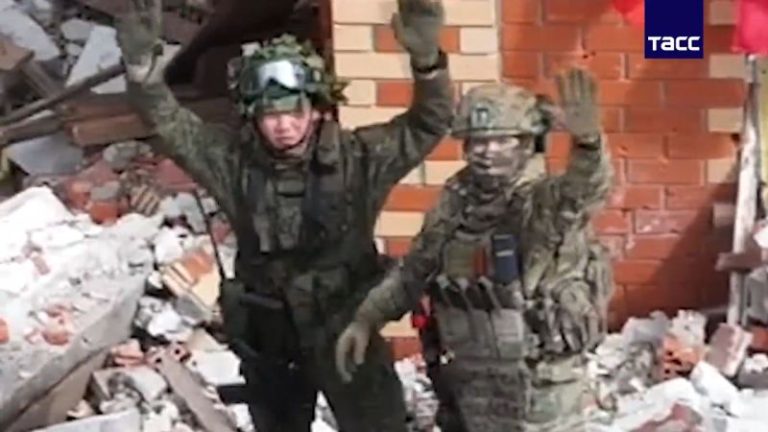Roblox Corporation (RBLX), the company behind the immersive online gaming universe, has been on a strong run since April. This isn’t the first time the stock demonstrated sustained technical strength: RBLX has maintained a StockCharts Technical Rank (SCTR) above 90, aside from a few dips, since last November.
Currently, RBLX is showing up on a few scans that may signal an opportunity for those who are bullish on the stock. It currently ranks among the SCTR Report Top 10, but also appeared on a few cautionary scans, including the Parabolic SAR Sell Signals and Overbought with a Declining RSI scans (both of which are available in the StockCharts Sample Scan Library).
So here’s the question: Is RBLX a strong stock that’s about to undergo a buyable dip?
Weekly Chart: Key Breakout and Resistance Levels
Before we explore that question, let’s take a look at a weekly chart for a broader perspective.
FIGURE 1. WEEKLY CHART OF RBLX. The stock is barely above halfway between its three-year lows and highs. If it delivers the growth investors expect, you could see another leg higher once the pullback completes.
The weekly chart shows RBLX trading in a broad range from late 2022 to late 2024, repeatedly failing to clear resistance near $47–$48. When it finally broke out in November, the stock’s technical strength was reflected in its SCTR score, which held a sustained position above the 90 line save a few declines.
Breaking above the $47–$48 resistance was a key move, as that level turned into support in December and again in April, where RBLX established a base ahead of its current rally. The subsequent move up was sharp, arguably even parabolic, peaking at $106.17 before pulling back.
If you look closely, you’ll see a swing high at around the $125 level (December 2022). This marks a technical level that happens to align with several Wall Street price targets. The blue line at $140 marks RBLX’s all-time high. Both levels can serve as potential price targets and are also likely to act as resistance.
RBLX is a technically strong stock that is fundamentally robust, despite remaining unprofitable on a GAAP basis. With strong user engagement, accelerating revenue growth, and plenty of free cash flow, it’s a favorable growth stock. However, it’s overbought. So, for those looking to get in, what are the key levels to watch out for?
Daily Chart: Fixed and Dynamic Support Levels to Watch
Let’s shift over to a daily chart.
FIGURE 2. DAILY CHART OF RBLX. Although the stock is currently overbought, there are plenty of support levels below. If you’re bullish on the stock, now’s the time to add RBLX to your ChartLists and set price alerts.
The strength of RBLX’s current surge is highlighted by the Bollinger Bands. The stock has been “walking the band” over the past two months. Now that it has pulled back, it appears to be bouncing off the middle band, suggesting that investors are still accumulating the stock.
As far as the pullback is concerned, the Money Flow Index (MFI), a volume-weighted Relative Strength Index (RSI), shows that RBLX entered overbought territory in May and began declining in late June, revealing a divergence between MFI and price—an early signal that RBLX was about to pull back. That pullback materialized on Tuesday. Whether it continues in the coming sessions is something we’ll have to see. In contrast, the Chaikin Money Flow (CMF), a measure of volume-based momentum, suggests that buying pressure is still relatively strong.
Whether RBLX continues advancing or pulls back in the near term, keep an eye on the Bollinger Bands for potential support. You may also encounter a bounce and favorable entry point at $92.50, a “local” swing low.
Another stronger support level sits near $75, aligning with the February and April swing highs. HOWEVER, that’s a huge drop; if the price falls toward this level, you’d have to reevaluate the stock’s momentum, volume, market sentiment, and the broader economic factors that may be driving such a decline.
When to Consider Entering RBLX
If you’re bullish on the stock, RBLX is something you’ll want to monitor in the days ahead. Add it to your ChartLists and observe how it acts within the context of the Bollinger Bands. If the stock declines further, you may want to set a price alert at $92.50 to see how price responds to this recent swing low. As mentioned above, further declines would warrant a re-evaluation, so keep a close eye on the price action.
Is Roblox Stock Still a Buy?
RBLX’s surge reflects growing optimism about the company’s future growth prospects. While it isn’t profitable yet by GAAP standards, its strong performance relative to analyst expectations and its strong free cash flow have made it something of a Wall Street darling. For now, the technicals are the proof in the pudding. If it is what growth investors seek, the price action should provide evidence before the fundamentals validate it in the coming earnings quarters.
Disclaimer: This blog is for educational purposes only and should not be construed as financial advice. The ideas and strategies should never be used without first assessing your own personal and financial situation, or without consulting a financial professional.










